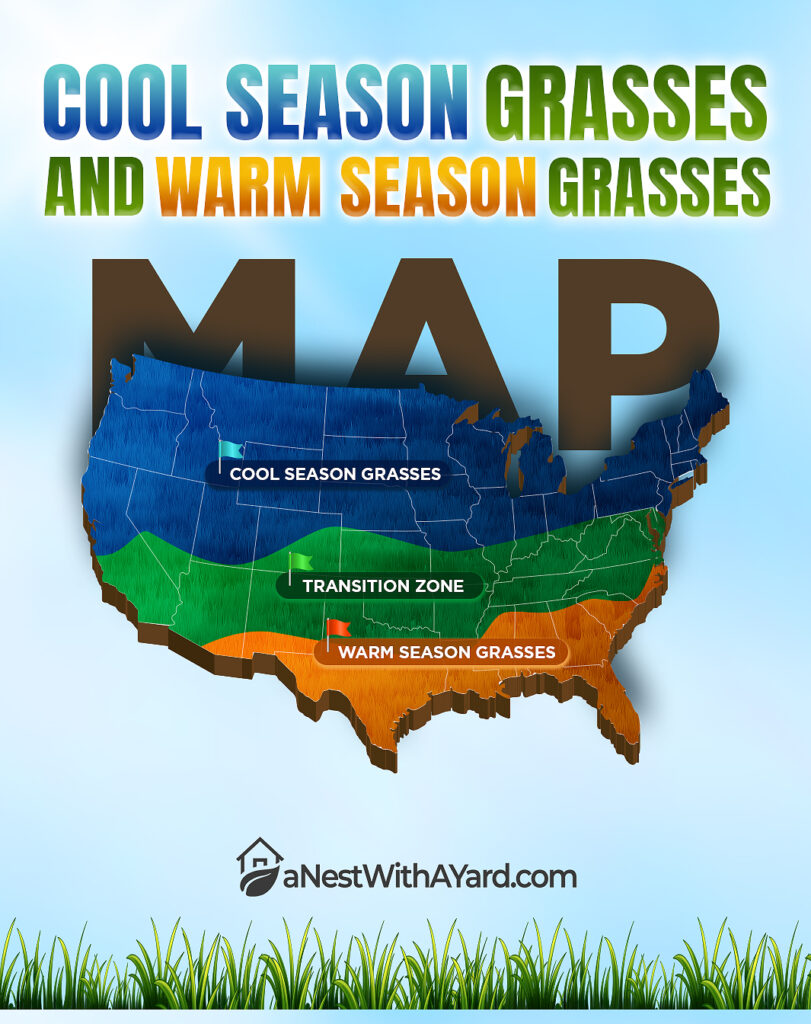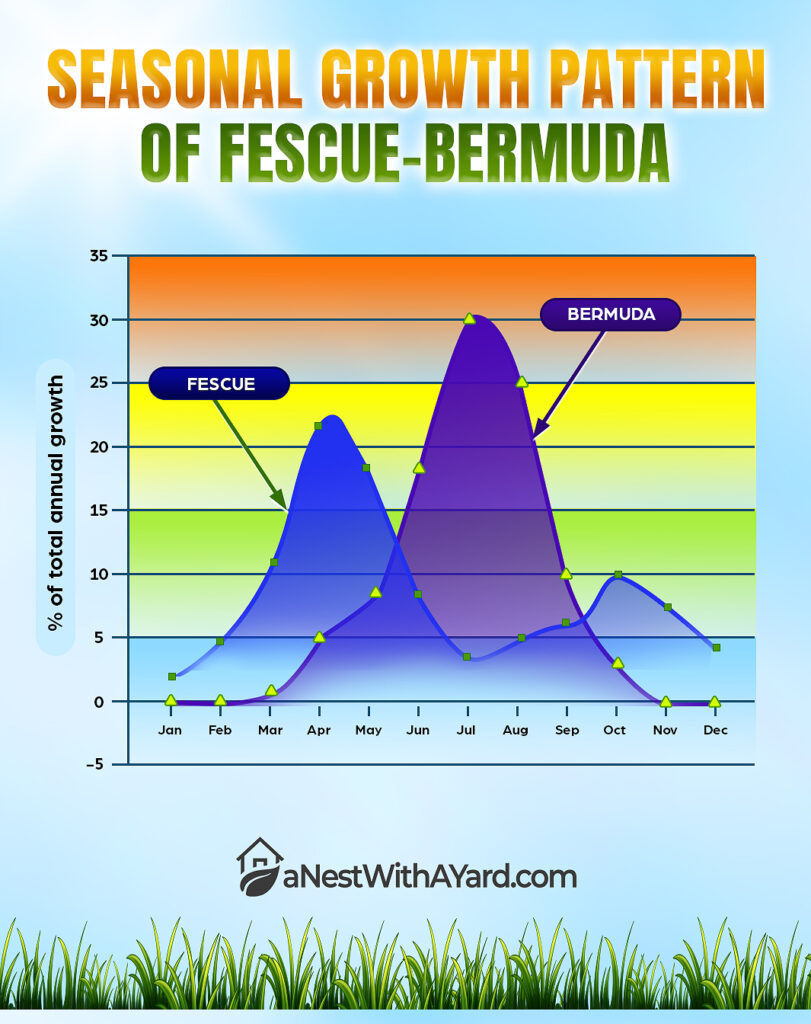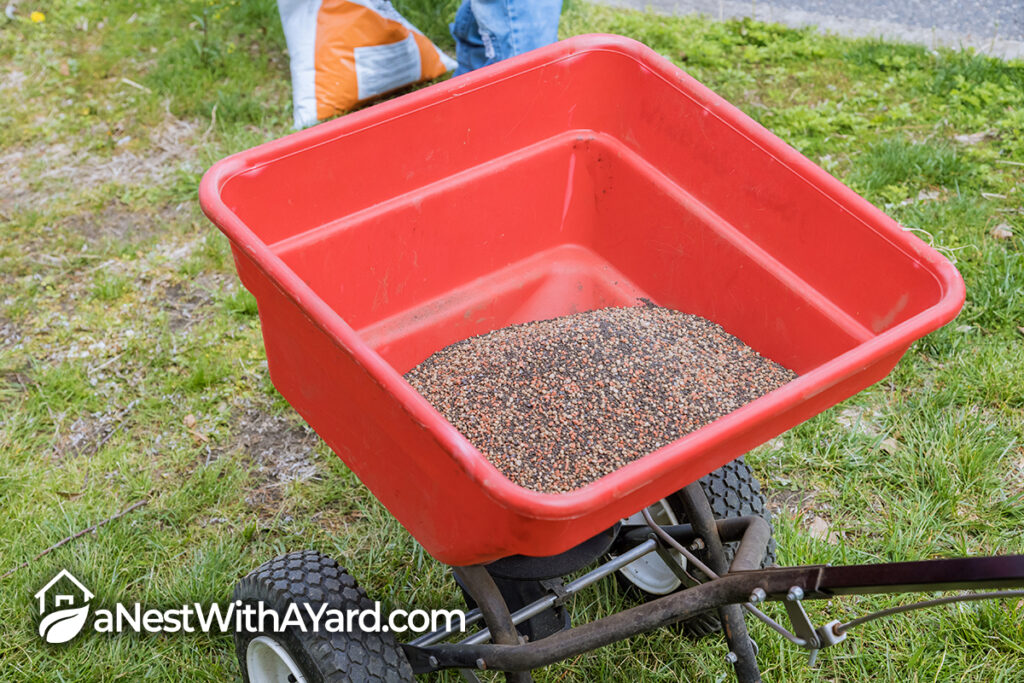You can overseed Bermuda grass with fescue if you live in an area with Southeastern weather. In this climate, the fescue won’t compete with Bermuda. You may get mixed results if you live in any other region. In this case, you might be better off overseeding with ryegrass.
Want a green lawn all year long, even in winter? Thinking of overseeding your Bermuda grass with Fescue?
Before you do that, you need to hear me out! In my experience, mixing Bermuda grass with Fescue is easier said than done. Some lawn care experts even advise against it.
I have decided to settle this dilemma once and for all! I’ll explain in detail why mixing these two grasses may be risky, and how to do it correctly for the best results.
Contents
Guide To Overseeding Bermuda Grass With Fescue
Understanding Both Grasses

After many failed attempts to overseed a Bermuda grass lawn, I came to realize that the only way to make these two completely different types of grass coexist is by understanding their needs and preferences.
You see, Bermuda grass is a warm-season grass while fescue is a cool-season grass. They don’t thrive in the same agriculture plant hardiness zones, as seen in the image above.
Bermuda grass thrives in the warmer part of the year and peaks in the midst of summer heat. However, Bermuda doesn’t do well in winter. And that’s the prime season for fescue! Fescue flourishes in cool weather.
In theory, mixing these two grasses should be totally fine. When the weather starts getting warmer, the fescue should die back and Bermuda should start reasserting again. But the problem arises when the tall fescue lasts well into the summer and starts competing with Bermuda. I’ll explain it all below!
Click here if you want to know how Bermuda grass compares to St Augustine.
Can You Overseed Bermuda Lawn With Fescue?

That depends on who you ask!
Some landscaping experts advise against overseeding Bermudagrass lawns with tall fescue. The same goes for Kentucky bluegrass. Why?
Tall fescue can last well into the summer in some climates. If that happens, this supposed winter grass starts competing with Bermuda grass, taking away nutrients and moisture from the soil.
So, what’s the solution? Consider the climate where you live before overseeding!
Under southeastern conditions, cool-season grass and warm-season grass types complement each other. So if you live in this zone, feel free to overseed your Bermuda with tall fescue!
If you don’t live in this specific region, I suggest you use annual or perennial ryegrass seed instead. This is a good overall option for the South. Ryegrass cannot stand the heat and will die out just in time for Bermuda to arrive.
How To Overseed Bermuda Grass With Tall Fescue

After many tests, I got the best results when overseeding my Bermuda lawn in the fall, 4 to 6 weeks before the first killing frost.
Follow these steps when the right time comes:
- Mow your Bermuda lawn to a height of 1 inch. By doing this, you will ensure enough sunlight and moisture reaches the seeds.
- Using a thatch rake, remove dead grass and score the top layer of the soil so the fescue seeds can easily take hold.
- Aerate your lawn with an aerator machine you can rent from your local gardening store. This step is optional, but in my opinion, it makes a difference. Aeration introduces oxygen into the soil and aids the growth of healthy and deep roots.
- Water your lawn thoroughly with about 1 inch of water.
- Spread fescue seeds evenly using a seed spreader. Focus on those bare spots in your lawn. Use 5 to 10 pounds of fescue seed per 1,000 square feet to get a thick, dark green carpet.
- Spread nitrogen fertilizer according to the instructions provided on the packaging.
- Water the lawn once more to dampen the seeds and fertilizer. Keep watering every day until the grass starts spouting. It takes 7 to 21 days for fescue seeds to grow. When the lawn sprouts, you can implement a regular watering schedule – 1 inch of water per week.
- Let your fescue lawn grow 4 inches tall before mowing it down to 3 inches. Never take off more than ⅓ of the total grass height.
Watch this video for more tips on how to overseed a lawn:
FAQs
Is it OK to mix Bermuda and fescue?
It is not OK to mix Bermuda and fescue in every climate. Despite being a cool season grass, tall fescue can last well into the summer in some areas, posing a threat to Bermuda. The Southeastern climate makes fescue dormant just in time.
Can Bermuda grass and fescue coexist?
Bermuda grass and fescue can coexist in theory. How well they tolerate each other depends on your local climate. Southeastern conditions seem to work the best for both.
Difficult But Not Impossible!
Achieving a green lawn all year round may be difficult but not impossible! The key to success is knowing your climate and what grass seed works best for it.
Mixing Bermuda grass with fescue is the best option for those homeowners who live in the Southeastern region. Otherwise, I suggest you stay on the safe side and use ryegrass seed.
What are your thoughts? Let me know in the comments below, and feel free to ask me any questions. I would love to hear from you.
